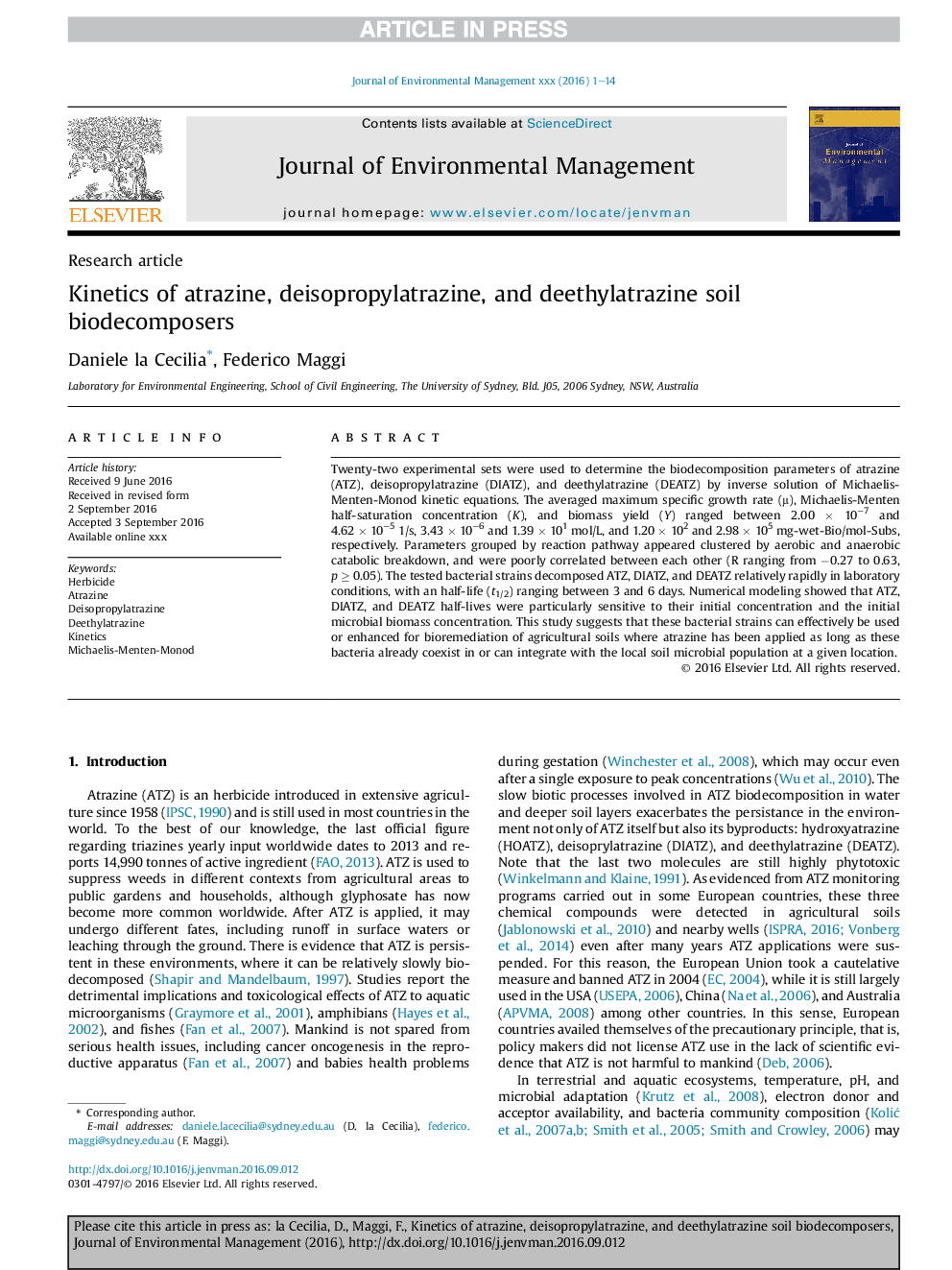| Article ID | Journal | Published Year | Pages | File Type |
|---|---|---|---|---|
| 5117203 | Journal of Environmental Management | 2016 | 14 Pages |
Abstract
Twenty-two experimental sets were used to determine the biodecomposition parameters of atrazine (ATZ), deisopropylatrazine (DIATZ), and deethylatrazine (DEATZ) by inverse solution of Michaelis-Menten-Monod kinetic equations. The averaged maximum specific growth rate (μ), Michaelis-Menten half-saturation concentration (K), and biomass yield (Y) ranged between 2.00 Ã 10â7 and 4.62 Ã 10â5 1/s, 3.43 Ã 10â6 and 1.39 Ã 101 mol/L, and 1.20 Ã 102 and 2.98 Ã 105 mg-wet-Bio/mol-Subs, respectively. Parameters grouped by reaction pathway appeared clustered by aerobic and anaerobic catabolic breakdown, and were poorly correlated between each other (R ranging from â0.27 to 0.63, p â¥Â 0.05). The tested bacterial strains decomposed ATZ, DIATZ, and DEATZ relatively rapidly in laboratory conditions, with an half-life (t1/2) ranging between 3 and 6 days. Numerical modeling showed that ATZ, DIATZ, and DEATZ half-lives were particularly sensitive to their initial concentration and the initial microbial biomass concentration. This study suggests that these bacterial strains can effectively be used or enhanced for bioremediation of agricultural soils where atrazine has been applied as long as these bacteria already coexist in or can integrate with the local soil microbial population at a given location.
Related Topics
Physical Sciences and Engineering
Energy
Renewable Energy, Sustainability and the Environment
Authors
Daniele la Cecilia, Federico Maggi,
